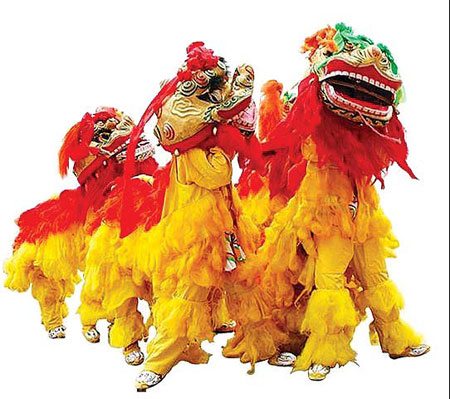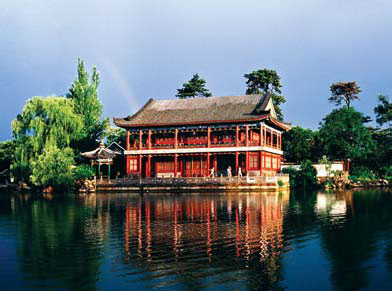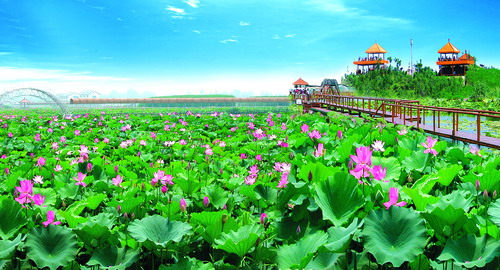|
|

The lion dance, a tradition in Chinese culture, often used for festive celebrations.
|
|

Chengde Imperial Summer Resort is listed as a world cultural heritage.
|
Hebei province considers itself to be one of the birthplaces of Chinese civilization, so it is planning on using its cultural resources to improve its position.
Specifically, it wants to brand five distinct aspects of its heritage: Taihang Mountain, the Great Wall, the kingdoms of Yan and Zhao, the capital city area, and the Bohai Sea.
Taihang Mountain is a revolutionary symbol for Hebei and contains many important spots that are significant to recent Chinese history.
 |
| Baiyangdian Park |
These include Xibaipo, an early Communist Party of China (CPC) Central Committee site; the Eighth Route Army's 129th division HQ; the Nanzhuang military region HQ; site of Nan Yu Anti-Japanese College; and Langya Moutain.
The province will reinforce its Taihang Mountain cultural connection by emphasizing places of revolutionary interest, improving its guides' functions, developing larger culture bases, and focusing on the 90th anniversary of the founding of the CPC and the 65th anniversary of the People's Republic of China.
The Great Wall is an important symbol of Chinese civilization and its long history and culture, and of the nation's hard work, courage, perseverance, and wisdom, together with its patriotic spirit.
The Hebei section of the wall is the longest, best preserved section with the most representative buildings and stretches for more than 2,000 kilometers.
Popular spots include Shanhai Pass in Qinhuangdao.
The Funing county section is known as a "natural Great Wall museum" and forms the main part of the Ming Great Wall.
The Zhangjiakou Gate is its most unique gate.
Recent years have seen the completion of Great Wall renovation and expansion projects.
The Hebei Great Wall Museum shows the history, culture, structure, and building of the wall.
Nihewan, in Zhangjiakou, is the location of the old kingdoms of Yan and Zhao and is known as the "orientals homeland".
Hebei surrounds Beijing, so it has held a prominent position since Yuan (1271-1368), Ming (1368-1644), and Qing (1644-1911) dynasty times.
In addition, there is Tangshan, the cradle of China's modern ocean industry and the world's largest coal export and bulk cargo port.
(China Daily 10/27/2011 page6)
|